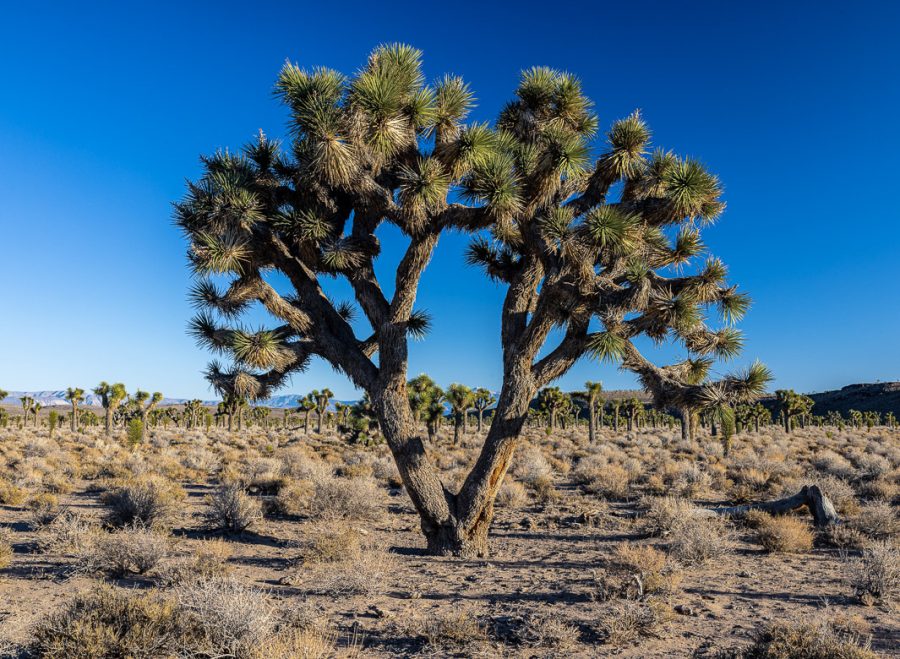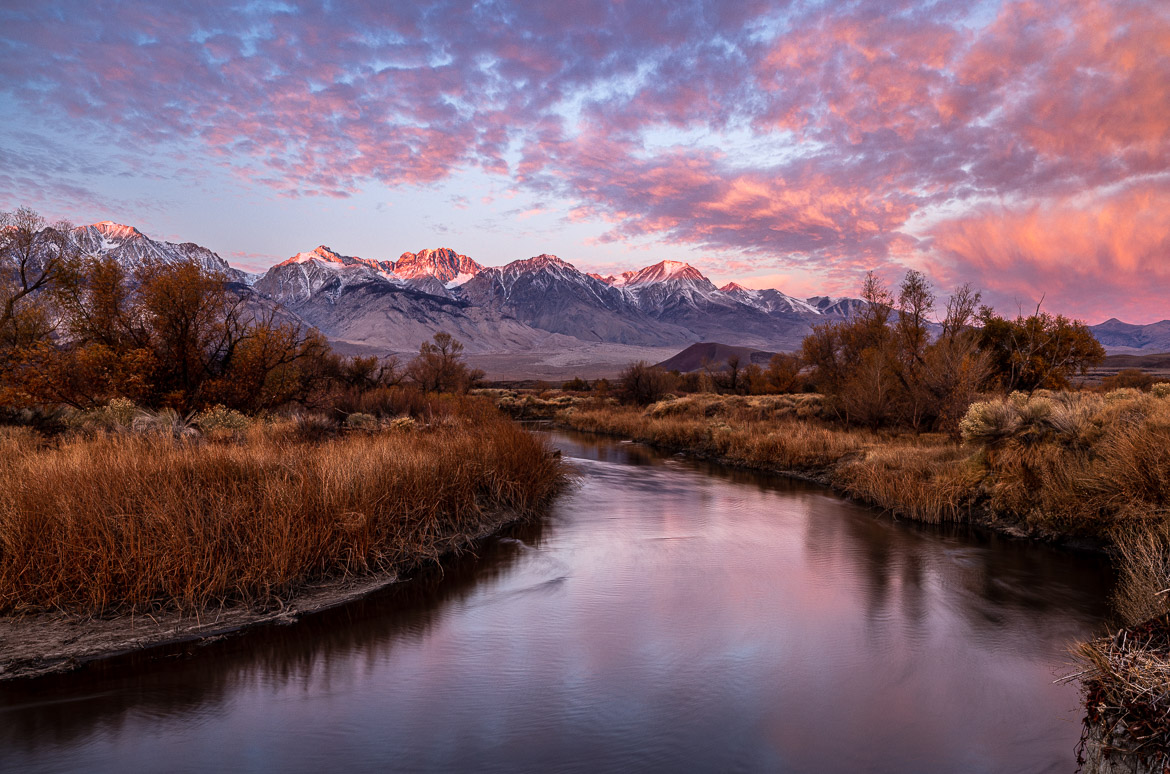
To the east of Sierra Nevada is Owens Valley, the deepest valley in the United States. I told a little about the geological background in my previous post about Alabama Hills. The valley constitutes the west end of the Great Basin. A river, Owens River runs through the valley and at its southern part there was a large lake, Owens Lake.
Owens Valley and the river and lake are named after Richard Owens, who participated in a cartographic expedition to the Owens Valley in 1845.
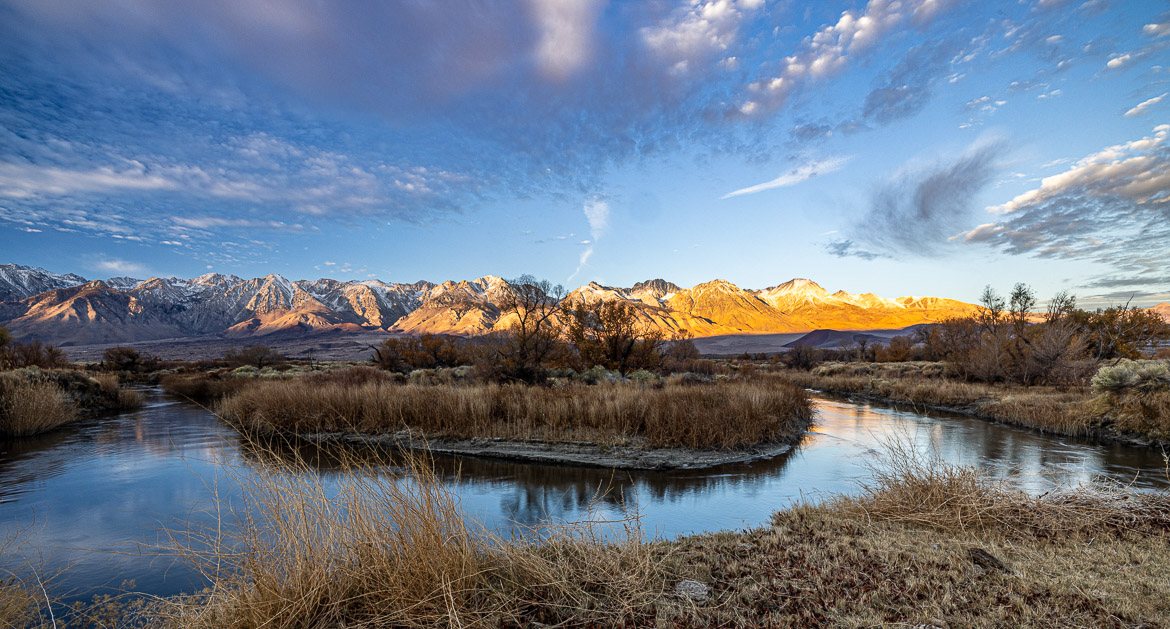
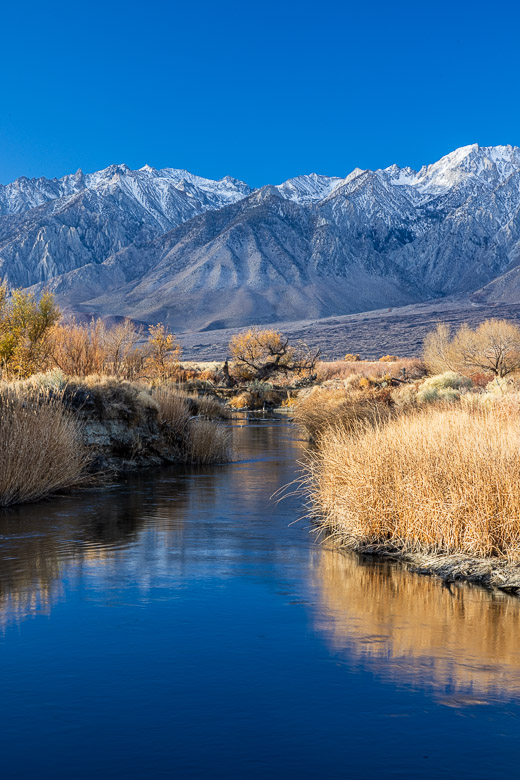
In the beginning of the last century Los Angeles started to exploit the water in Owens Lake for its own needs and in 1913 it had built the first aqueduct to supply LA with water from Owens River and Lake. The aqueduct was a combination of open canals, covered concrete conduits and concrete tunnels. It was an engineering feat, and it still supplies 1/3 of the water needed in LA.
But the environmental consequences were devastating. It eliminated Owens Valley as a viable farming community, and it initiated what is called the California Water Wars in in the 1920s.
The bed of Owens Lake was completely emptied in 1926, only 13 years after LA started to take water from the valley. Now they have returned a tiny level of water and both the river and the lake are attractive objects for photography. But you cannot but reflect about the price we pay for the expansion of our cities and industries. The former lake beds are alkalic and when strong wind blows, it further adds to the aridity of the valley.
My photographs are from two mornings, one at an attractive bend of the river and one from a location at the tiny remains of the original lake. At both locations the mountains of the Sierra Nevada tower in the background.
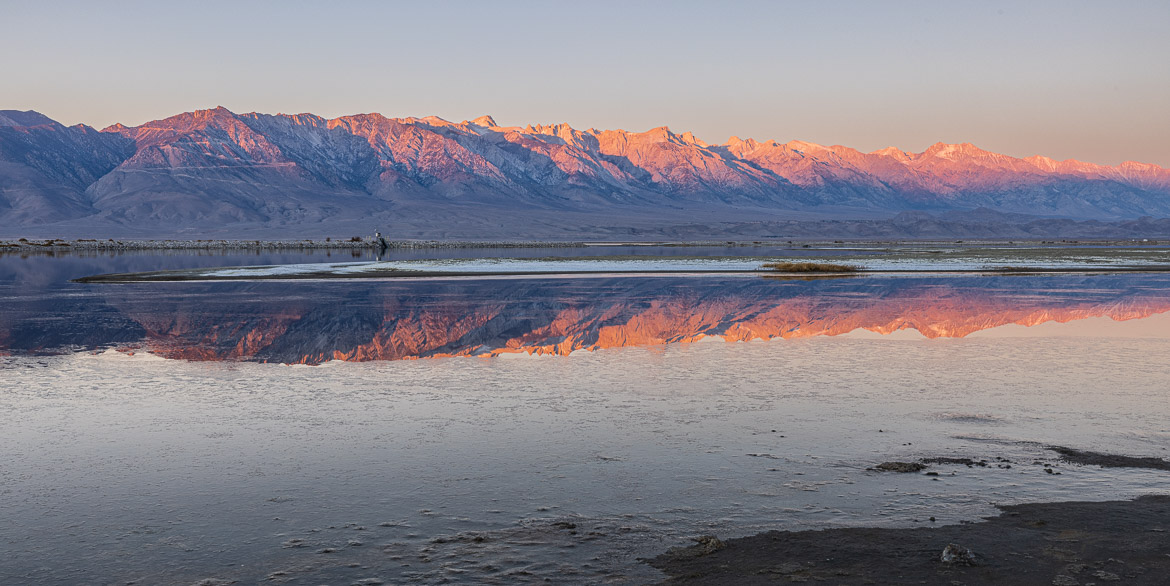
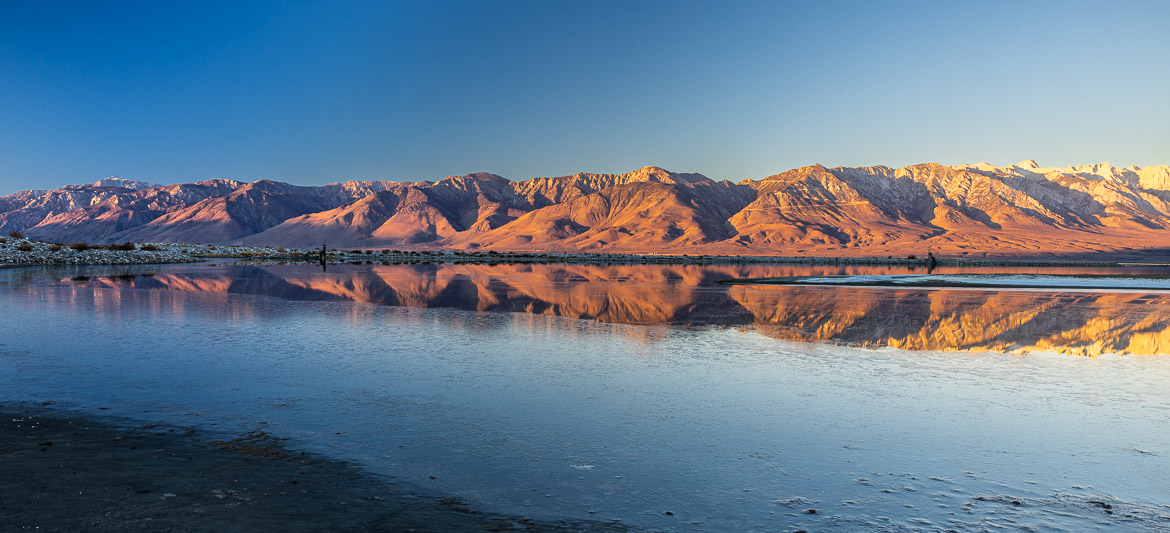
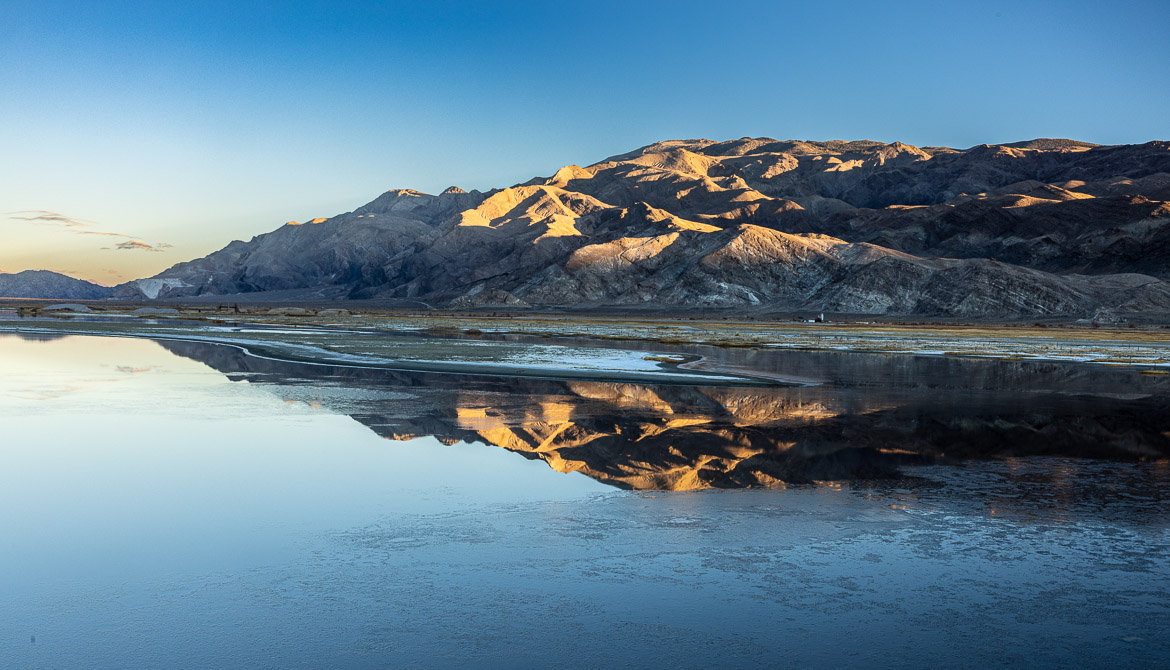
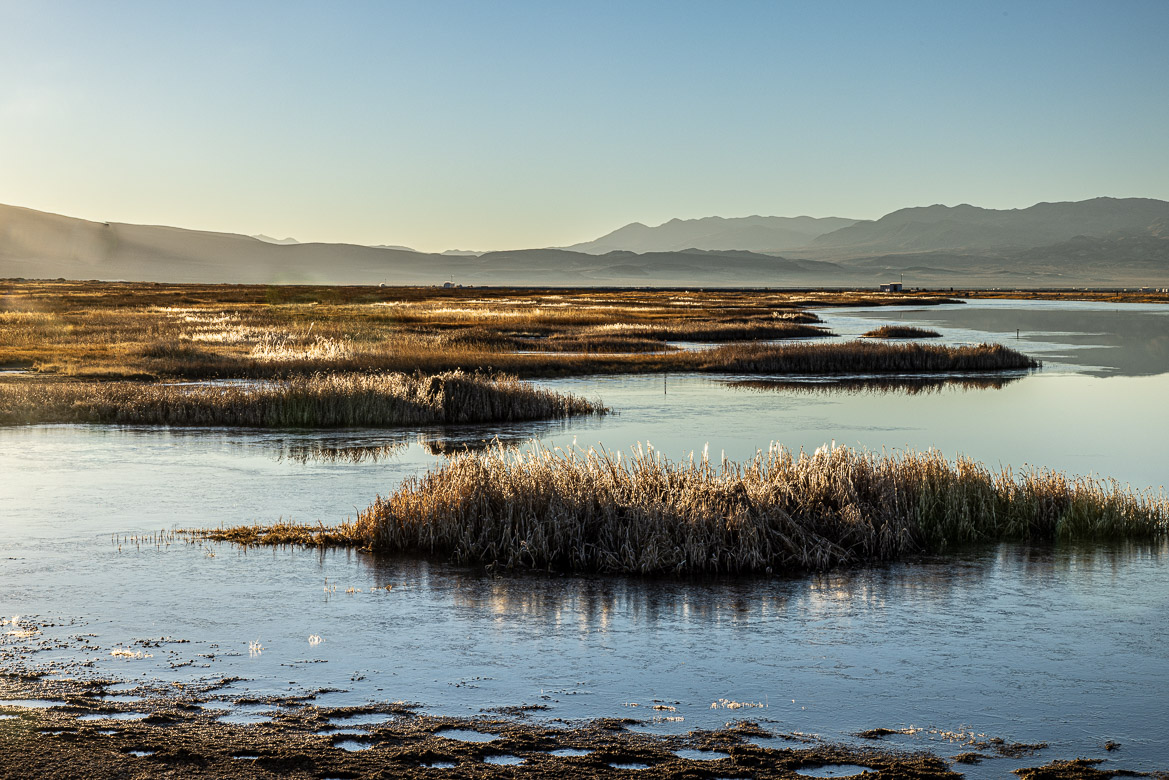
Being in the rain shadow of the Sierra Nevada, Owens Valley and surrounding areas have a desert like climate and not much can grow there. But one unique plant that survives and grows in parts of this area and in the Mojave desert is the Joshua Tree. A Joshua Tree isn’t actually a tree at all. it is part of the yucca genus. They grow at an altitude of between 2,000 and 6,000 feet (600 – 2,000 metres) and can grow 10 metres tall. They estimate the life span of a typical Joshua Tree to around 500 years.
The plant got its name from Mormon settlers that crossed the Mojave desert in the mid 19th century. They thought the plant reminded them of the story in the Bible, where Joshua reaches up with his hands towards the sky in prayer.
So I finish this post with a photo of a proud specimen of a Joshua Tree with whole forest of them in the background.
